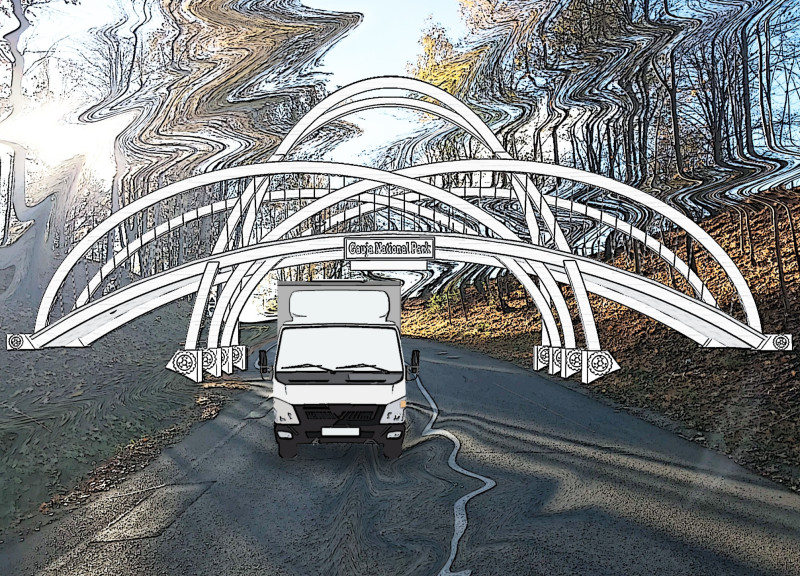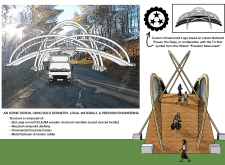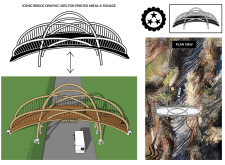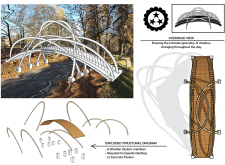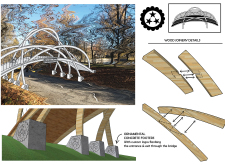5 key facts about this project
Ganja National Park features a design that responds thoughtfully to its surrounding environment and cultural context. Located in Latvia, the park serves as a space for recreation and cultural expression. The design revolves around a unique logo that blends the Daisy, the national flower of Latvia, with the Tri-Star symbol from the Historic "Freedom Monument." This integration of local symbols creates a strong sense of identity and purpose for the park.
Design Approach
The architectural form uses bold geometric shapes, particularly large curved elements that create a sense of movement within the landscape. These curves guide visitors as they explore the park, promoting a connection between the built structures and the natural setting. The design emphasizes ease of movement, encouraging people to engage with the various features of the park.
Materials and Construction
The main structural components consist of large curved GLULAM wooden members sourced from the local area. This choice supports sustainability while providing the necessary strength and flexibility to achieve complex shapes. The flooring is made from recycled composite decking, which aligns with environmental goals by reducing waste and utilizing materials that have a minimal impact on the ecosystem.
Structural Details
Concrete footers provide a firm foundation for the structure, ensuring stability and contributing to its visual appeal. Metal fasteners and tension cables are used to secure the assembly, enhancing both the safety and aesthetic of the design. These elements reflect careful engineering, balancing function with visual clarity.
Light and Shadow Interaction
The interplay of light and shadow adds depth to the experience of Ganja National Park. As the sun moves across the sky, shadows shift, creating changing patterns on the surfaces of the park. This dynamic element enriches visitors’ experiences, making each visit unique as they interact with the environment throughout the day.


